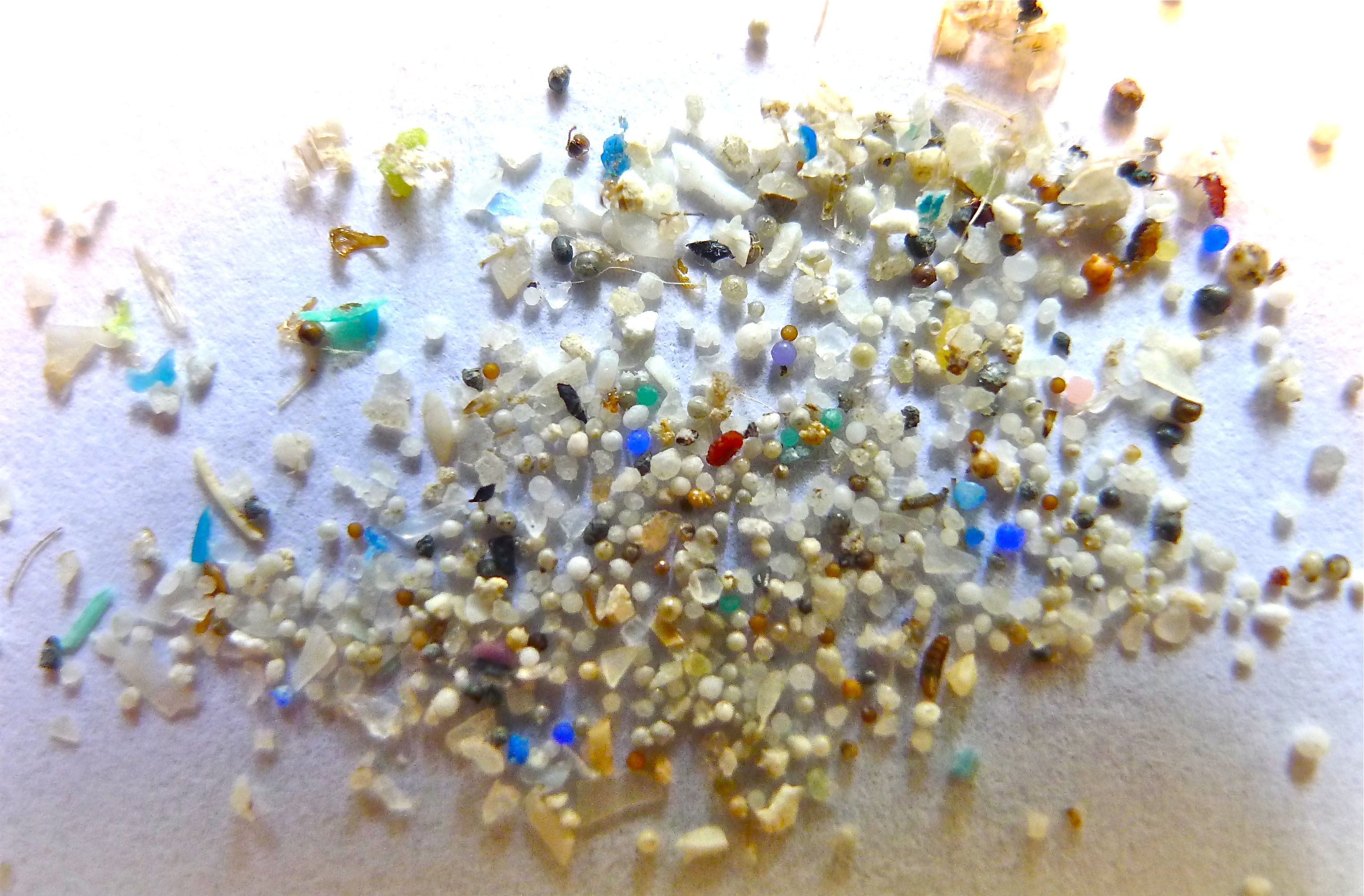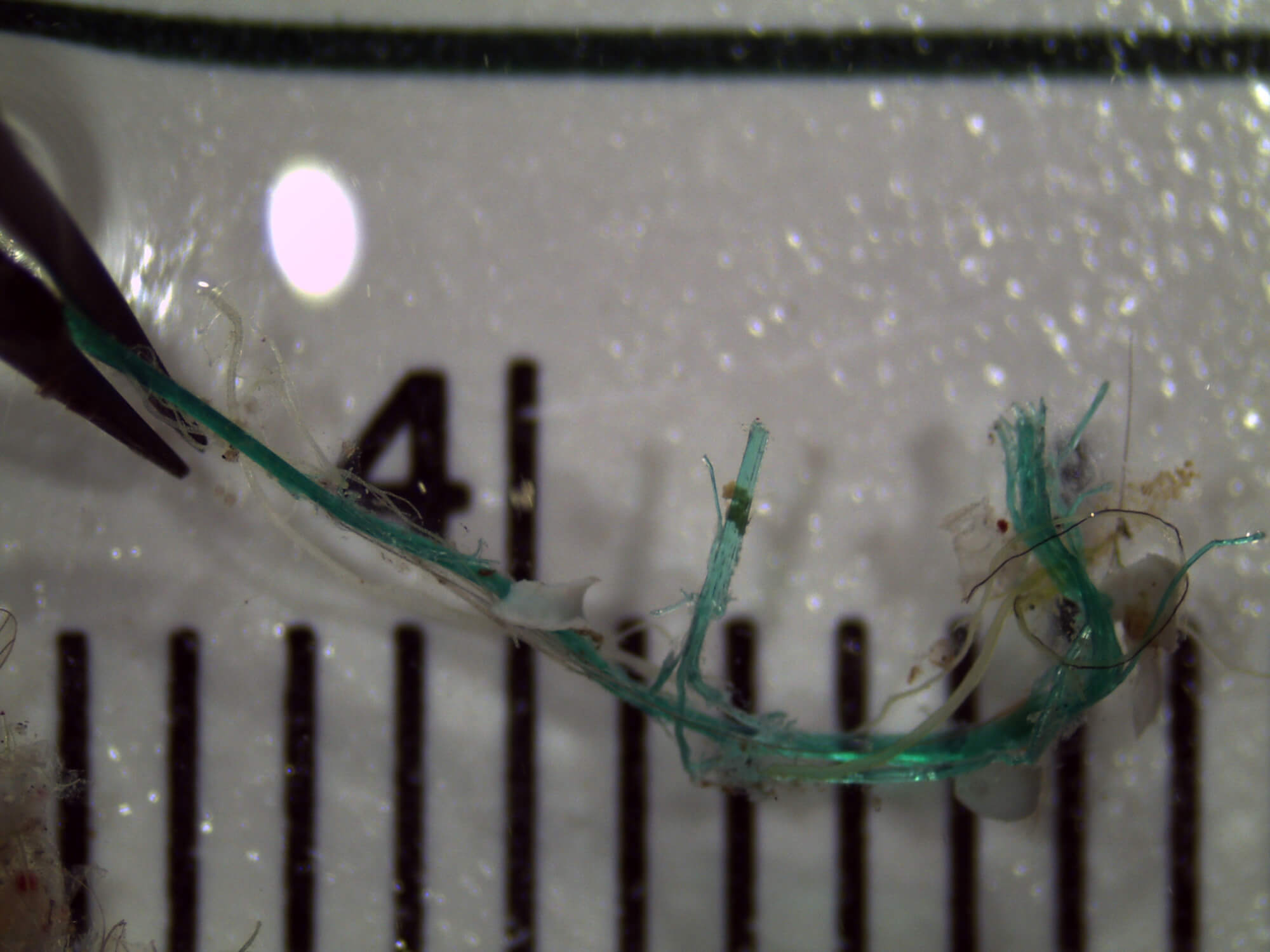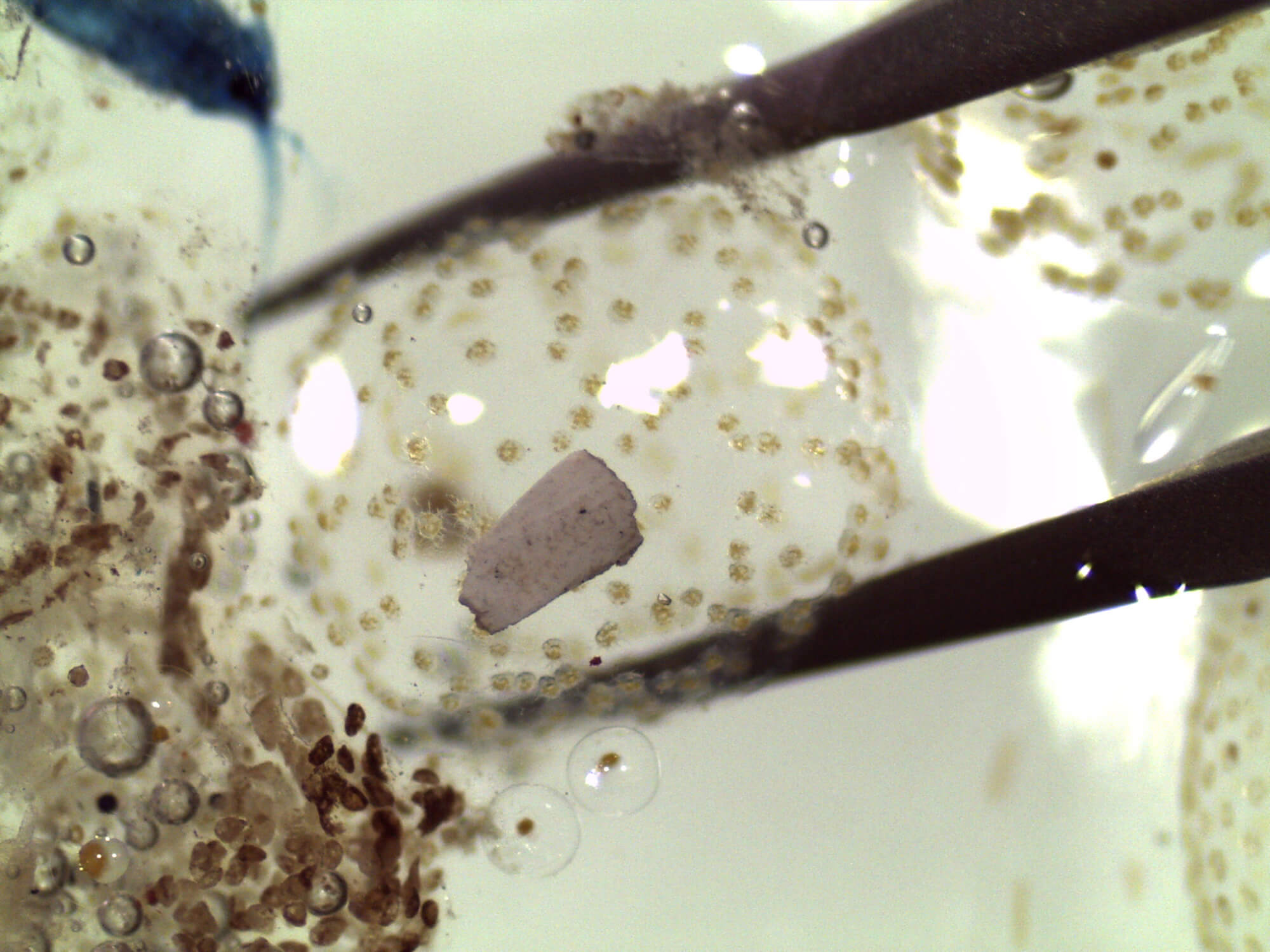Problems related to plastic garbage in our oceans and waterways have been with us for many years now. What’s more, the amount of plastic waste in the oceans is expected to triple, reaching 29 million metric tonnes annually. But the most insidious effects of plastic are the ones we can’t see. A recent study carried out in New Zealand shows that tiny particles are present in enormous quantities in the excrement of several species of whales. These are not isolated cases, which is why researchers are concerned about the potential impacts that these elements may be having on the health of individuals.
What are microplastics?
Microplastics are particles that are smaller than 5 mm (0.2 inches) in size. They can come from larger plastic waste such as bottles or even fishing nets, which slowly break down into tiny particles. But most of the microplastics in the ocean are actually believed to come from our clothes (mainly those made of polyester). Microfibres are released whenever we do our laundry and end up in wastewater, where their tiny size means they cannot be eliminated by filtration systems.
Difficult to detect, these particles proliferate and seem to intoxicate marine biodiversity throughout the water column, all the way to the ocean floor. Species at the top of the food chain seem to be particularly affected.
3 million particles swallowed per day
In a study published in April 2022 in Science of the Total Environment, a research team from New Zealand’s University of Auckland presents the results obtained on Bryde’s whale and sei whale populations living in the Hauraki Gulf off the coast of Auckland. After collecting and analyzing the animals’ feces for 5 years, they discovered that these two species of cetaceans consume an average of 3 million microplastic particles per day per individual.
How do these microplastics end up on the whales’ menu in such enormous quantities? One of the most plausible theories would be that these particles are found in large marine mammals after having accumulated as they move up the food chain. This is known as trophic transfer: the whales’ preys are the first to ingest this waste before being swallowed themselves. Baleen whales, on the other hand, filter huge volumes of water with each gulp they take to catch their prey, so they are directly exposed to freely floating particles in the ocean. Thus, studying the presence of plastic in rorquals allows for a fairly precise picture of overall pollution levels in the water.
Some might argue that the fin whale populations that were the focus of this study live off the coast of Auckland, New Zealand’s capital city. Could this proximity to an urban environment be the reason for their overexposure to microplastics? Unfortunately, other studies also seem to suggest that this pollution is omnipresent.
Microplastics to the Arctic
A few years ago, on the opposite end of the world and far from any major urban centres, other scientists made similar discoveries regarding belugas and microplastics.
From 2017 to 2018, researchers from the organization Ocean Wise worked with Inuit hunters in the Northwest Territories and in the Beaufort Sea to try to assess the rate and primary mode of exposure of belugas to microplastics in this region. By analyzing the stomach contents of seven carcasses, they found between 18 and 147 plastic particles per individual, nearly half of which were likely polyester in the form of fibre.
In order to assess the exposure rate of the main prey of Beaufort Sea belugas, the team also took samples from five species of fish: arctic cod, saffron cod, capelin, arctic cisco and fourhorn sculpin. One in every five fish had plastic in its digestive tract, mostly polyester fibres, with a mean abundance of 1.42 ± 0.44 particles. Considering these results and the average amount of food consumed by a beluga each year, the researchers estimated that any given individual likely ingests between 3,800 and 145,000 plastic microparticles per year.
Even if the study does not provide much insight into the impact of this pollution on the health of marine mammals, these finds do create an additional concern for the plight of belugas and whales in general. It also reinforces the importance of taking action to reduce the volume of plastic infiltrating the most remote corners of the planet.
What about the St. Lawrence?
To date, no study specifically relating to the presence of microplastics in the digestive tracts of St. Lawrence whales has ever been conducted. But it is not for a lack of interest in the matter. According to Stéphane Lair, professor at Université de Montréal’s Faculty of Veterinary Medicine, “The problem does not come from microplastics per se, but rather from the toxic chemical compounds that can be present in these plastics, which serve as a vehicle. However, we are already working on a project to monitor the levels of contamination from these compounds in tissue.”
At the same time, Université du Québec in Rimouski has just obtained funding to carry out a new research project on the level of microplastic contamination in the St. Lawrence River and Estuary. Professor Zhe Lu, ecotoxicology expert and project manager, states that “In addition to shedding light on the various microplastics [in the St. Lawrence], our research project will examine their impacts on greenhouse gas emissions, how they break down in the environment and their impact on marine life.” This study will surely contribute to a better understanding of the threat that these particles pose to cetaceans residing in the St. Lawrence, which already have to cope with numerous pressures stemming from anthropogenic activities.







